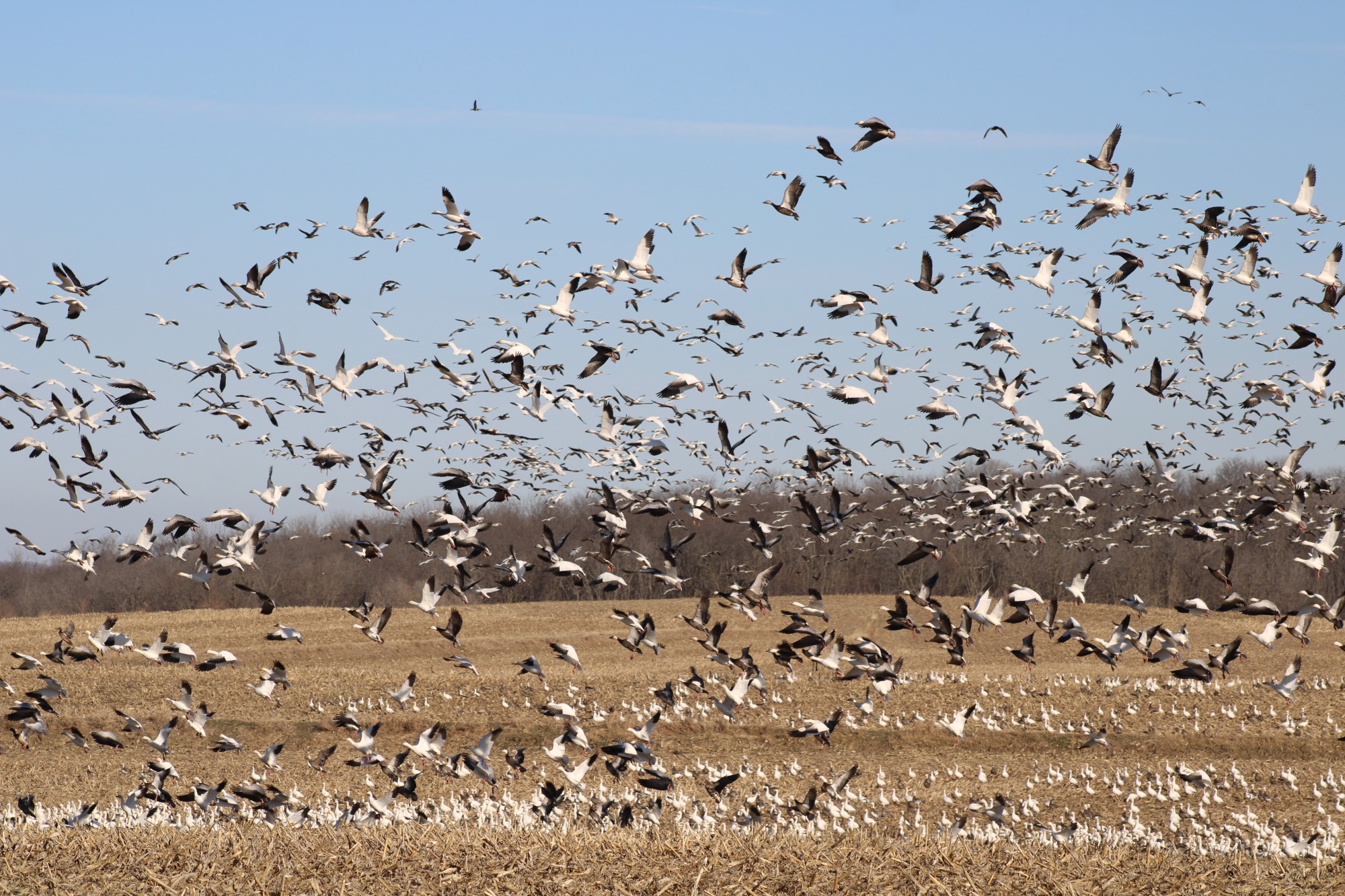March Nature Notes

It’s time for March Madness!
Well, the past few weeks of February have been a whirlwind of birds! Snows and Blues, and the squeaky White-fronted geese. The numbers of Trumpeter swans are a little down from this time last year, but we will be patient. They have set the stage for so many more to follow! Currently, there are Common mergansers arriving, along with buffleheads, goldeneyes, mallards, and pintails. Not only are we waiting for more ducks to return, but the shorebirds are quite fascinating, as well. March is the time that noticeable seasonal changes begin to appear, and those changes happen FAST...it’s March madness!
The Spring Equinox will occur on Tuesday, March 19, 2024. It has felt like spring in the air, but this date is the official start of spring. The Worm Moon will be the first full moon of the spring season on March 25.
The first of the spring ephemerals (the short-lived plants that emerge quickly) in Central Iowa should be making their debut this month. If you live in an area in Iowa that the skunk cabbage blooms, they may have already appeared and begun inviting the first of the pollinators to get the season started. Snow trillium is currently budding, so with the warm temperatures, the Queen bumblebees and honeybees will be getting their first foods. The woodlands will begin to come alive! The warmer days of February brought out many overwintering butterflies, such as the Comma and a few Red admirals.
March is the usual time of gathering sap from the Sugar Maple trees for making maple syrup, but those who relish in the tradition of gathering the sap started the first part of February. The warmer weather really got the sap flowing. Historically, sap was considered an agricultural crop and pioneers gathered as much sap as they could from the sugar maples for their annual supply of sweetener.
The elusive woodcock begins their mating season in March. We call them timberdoodles in our neck of the woods due to their unique, oddball appearance. They are very low to the ground and their huge eyes are set way upon the top of their head. Living around and within the woodland their dance and behavior has given them many other names like bog sucker and mud bat. Their aerial dance is a sight to see on a clear evening.
The sounds of chorus frogs and spring peepers may be heard from small ephemeral ponds and roadside ditches holding water. Some of the wetlands can be ear piercing with their song. These tiny little frogs call when it is still chilly outside. Grab a fine-toothed comb and take your finger up the teeth of the comb to mimic the chorus frog sound.
Keep your eyes out for the wild turkeys, you may be seeing the Toms and jakes strutting to impress those ladies. Always a favorite time to see and hear.
As of March 1, 2024, many red-winged blackbirds and killdeer have made their announcements. Grackles, and rose-breasted grosbeaks will soon be returning from their wintering areas. Many of these birds will be returning from Central and South America.
Adult osprey will be returning the latter part of March to regain their nesting territories. These birds have become iconic in Iowa with reintroduction efforts of the species beginning in 1997. Another magnificent bird returning from Central and South America.
Large groups of American white pelicans donning their spring plumage and breeding bumps (nuptial tubercle) will be moving through Iowa. We always enjoy this celebration of white! Both male and female adult breeding pelicans sport the breeding bump.
Watch and listen for more waterfowl migration. The adult males will be in their most grand gala attire and the vocals will overwhelm the waters and the sky. You will hear from high above the announcement of open waters. I receive questions about the Blue-winged teal returning. The BW teal are our longest distance waterfowl migrators going to Mexico and on to South America. They don’t adapt to cold weather too well, so they will be some of the last ducks to come in.
A few turkey vultures have appeared in the area, but the larger groups will be coming in March from their wintering grounds in South and Central America. It’s almost like clockwork, migrating eagles leave and the Turkey vultures arrive. Their job of environmental clean-up is vital to the environment.
As always, we will try to keep you apprised of nature’s happenings.
Exciting and uplifting month ahead…enjoy!


